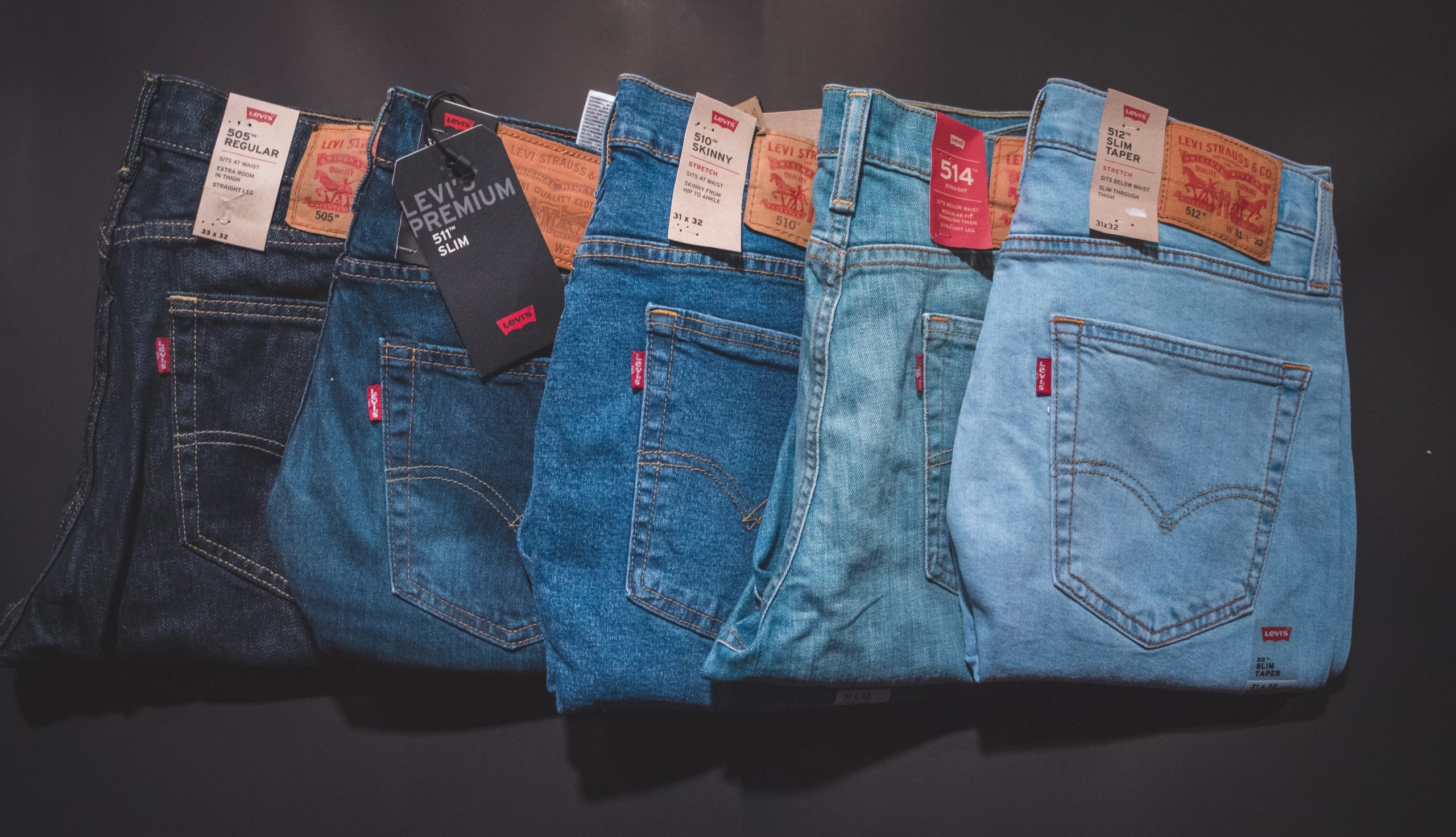While historians disagree on origin of jeans or where denim originated, the fabric was classified as a twill weave cloth with a single colored thread and one white thread. It is usually assumed that it was ‘produced’ in Nîmes, France. Serendipity had a hand in it. The fabric weavers of Nîmes discovered they had created a unique and robust fabric unlike anything else after an unsuccessful reproduction effort of a hard-wearing cotton fabric known as ‘jeane.’ The fabric was produced from a twill weave, with the weft passing under the warp threads.
The word “jean” was first used to define a twill cotton fabric used for pants in the 1800s. However, the commonly used for ultimately took over the cloth. This material was previously used to produce blue jeans, which are now referred to as “denim.” Whether or not “denim” is an anglicized version of the French cloth.
The weavers used indigo to dye the warp threads blue, but they kept the weft threads white. This method would later result in a cloth with a distinct blue color on one side and white on the other. Serge de Nîmes (translated as ‘twill of Nîmes’) was the name they gave it.
There’s still an argument to be made that the French name was imposed on an already existing English item for the benefit of brand recognition. The term “jean” was used to describe a wide range of cotton or denim casual trousers during the twentieth century. Jacob Davis, a fashionista, patented the most honourable, traditional denim as we know it in the 1870s, made of indigo-dyed denim with pockets and sturdy riveting, ideal for labour use.
Introduction of large scale manufacturing of jeans.
Strauss and Davis were the first to manufacture jeans for manual labour workers. Jeans were originally made of two fabrics: brown duck and blue denim; however, the popularity of the latter fabric grew after the invention of the denim 501 fashion in 1890. Design changes occurred throughout the decade: Strauss added a double arch of orange stitching for sturdiness and to distinguish them as Levi’s; belts were introduced in 1922, and zippers replaced the button fly on most styles in 1954. New makers were free to reinvent the style when Strauss and Davis’ patent expired in 1890. In 1895, OshKosh B’Gosh debuted, followed by Blue Bell in 1904 and Lee Mercantile in 1911.

The first modern jeans were introduced in the 1920s, however, they were largely sold to western workers such as cowboys, lumberjacks, and railroad employees. Levi’s jeans are said to have first been presented to the East during the 1930s dude ranch craze.
In the 1920s and 1930s, Hollywood helped to romanticize blue denim by putting the trousers on select handsome cowboy types played by John Wayne and Gary Cooper. Jeans, on the other hand, were not associated with the infamous anti-establishment youth until the late 1950s.
Servicemen from the United States transported their favourite denim pairs overseas during WWII in the 1940s. Despite the fact that the manufacturing of denim workwear dropped during the war due to a scarcity of raw materials, the end of the war marked the beginning of a change in attitude. Denim jeans have been far more closely connected with leisurewear than with office attire. Hippies and anti-war rioters wore jeans in the 1960s and early 1970s to indicate sympathy for the business class; ladies and women’s organizers favour blue jeans to show gender equity.
Jeans became identified with counterculture in the 1960s. The attire was turned down by high schools, which only helped to increase their status. In the mid-1970s, high fashion began to acquire popularity. Fiorucci’s Buffalo 70 jeans were skin-tight, black, expensive, and hard to come by, in other words, the polar antithesis of the younger crowd’s fading bell-bottoms.
Fashionistas’ appreciation of denim jeans
Calvin Klein is a well-known fashion designer was In 1976, the first stylist to utilize blue jeans on the runway. In 1979, Gloria Vanderbilt introduced her best-selling jeans. Not only were these designer jeans a financial success, but they were also promoted as having a more racy image. In the 1980s, Brooke Shields’ daring Calvin Klein campaign and Claudia Schiffer’s sensual Guess advertisement helped to give the blue jean a new lease on life. In the 1990s, fashion houses joined the jean sector.
Hip-hop apparel of the early 1990s was exhibited through oversized, low-slung baggy jeans; intellectuals turned to dark denim as a way to get back to the roots of styles; music stars preferred Diesel’s sandblasted and whiskered styles; aficionados paid high prices for vintage jeans.
They are currently available at both sides of the price spectrum and in a variety of styles such as broad, slender, high-waisted, low-waisted, light, dark, or colored.
Jeans have become so widespread that many of us don’t think twice about where our favorite pair originated from, how they were created, or their history. Denim remains one of the most adaptable, durable, and sought-after fabrics on the market, despite the huge range of inventive materials available. Jeans transcend gender, age, and socioeconomic status, with the majority of individuals owning more pairs than there are days in the week. As makers respond to consumer demand for environmentally friendly materials and production procedures, new types of “sustainable” denim are appearing.





